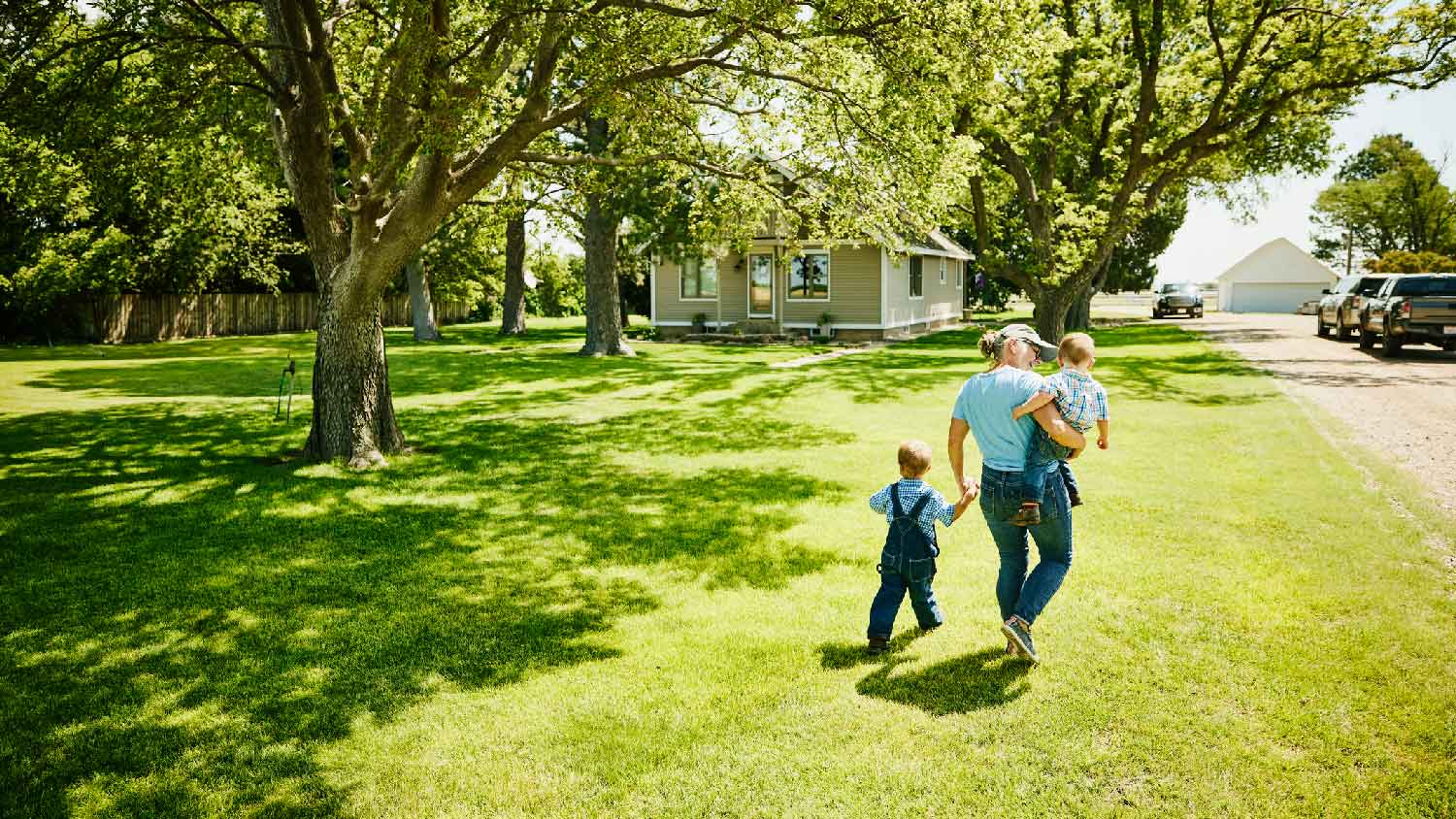Paws on Patrol—The Best Grass for Dogs You’ll Both Love
Grab a stick and yell fetch


Does anything beat a nice day playing with a pup (or pups) in the yard? The lawn makes a great spot for tag, fetch, and prime cuddle sessions. However, all of this foot and paw traffic wears down the appearance of your yard over time, and this is not helped by your pooch’s regular bathroom breaks. Do not fret, though, as certain grass types withstand even the bulkiest of roaming paws and can be easily installed by a trusted local lawn pro. Here is a breakdown of the best grass for dogs that you’ll love too.
1. Kentucky Bluegrass
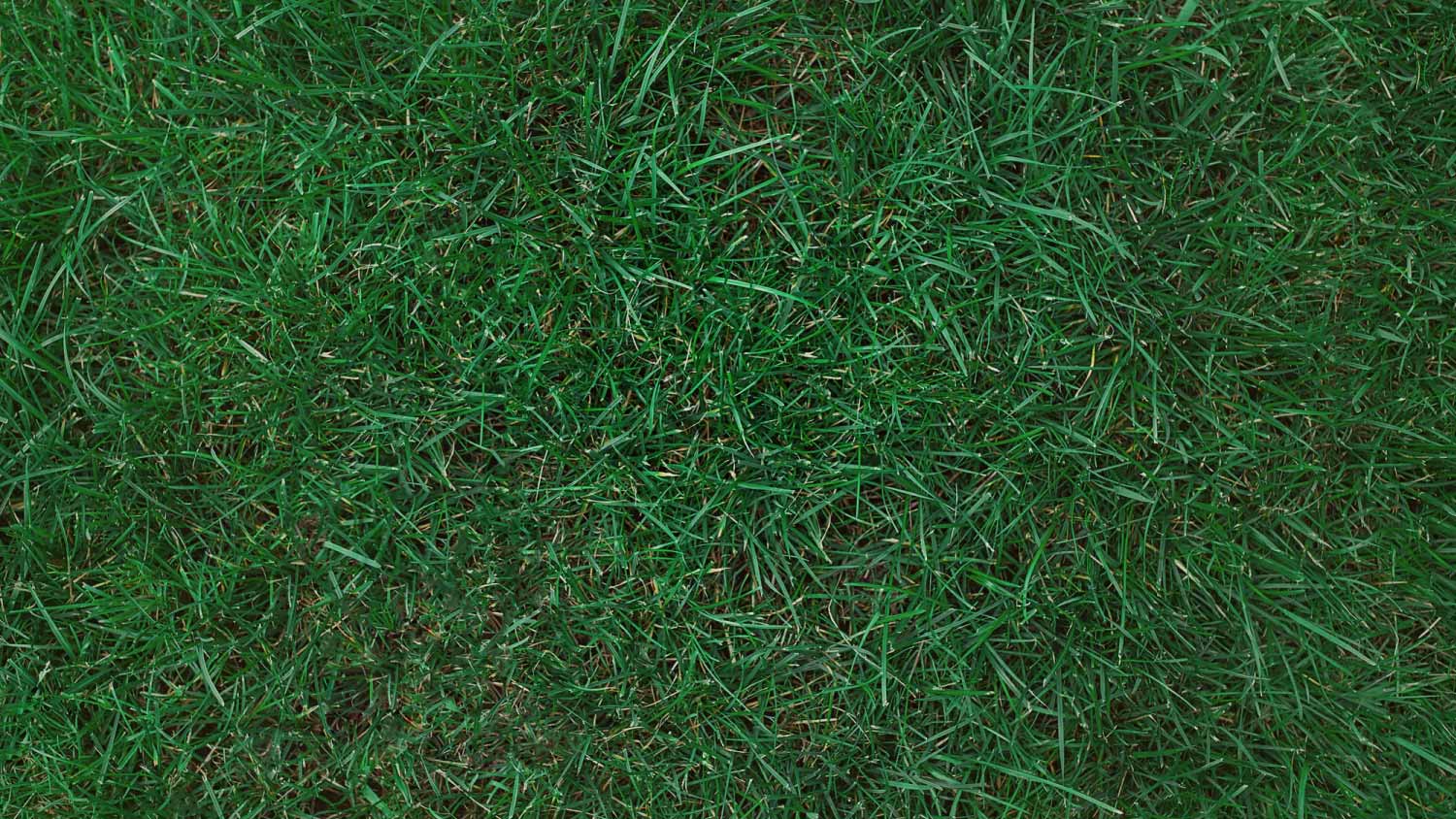
Designing your dream dog-friendly yard? Kentucky Bluegrass (poa pratensis) is the perfect ground layer for energetic pups that keep running, with no end in sight. This durable and cool-season grass grows quickly, heals quickly, and gets pretty thick after growing in. All of these traits combine to make it a fantastic foil for both roughhousing and potty breaks.
Kentucky Bluegrass is a decent choice for any climate, though it does a particularly excellent job in colder areas. This is also an attractive grass for the humans reading (sorry pups), thanks to its unique blue-hued blades of grass. This grass excels in multiple growing zones throughout the country, requires just an average amount of sun to grow, and requires slightly acidic to neutral rich soil.
2. Fescue
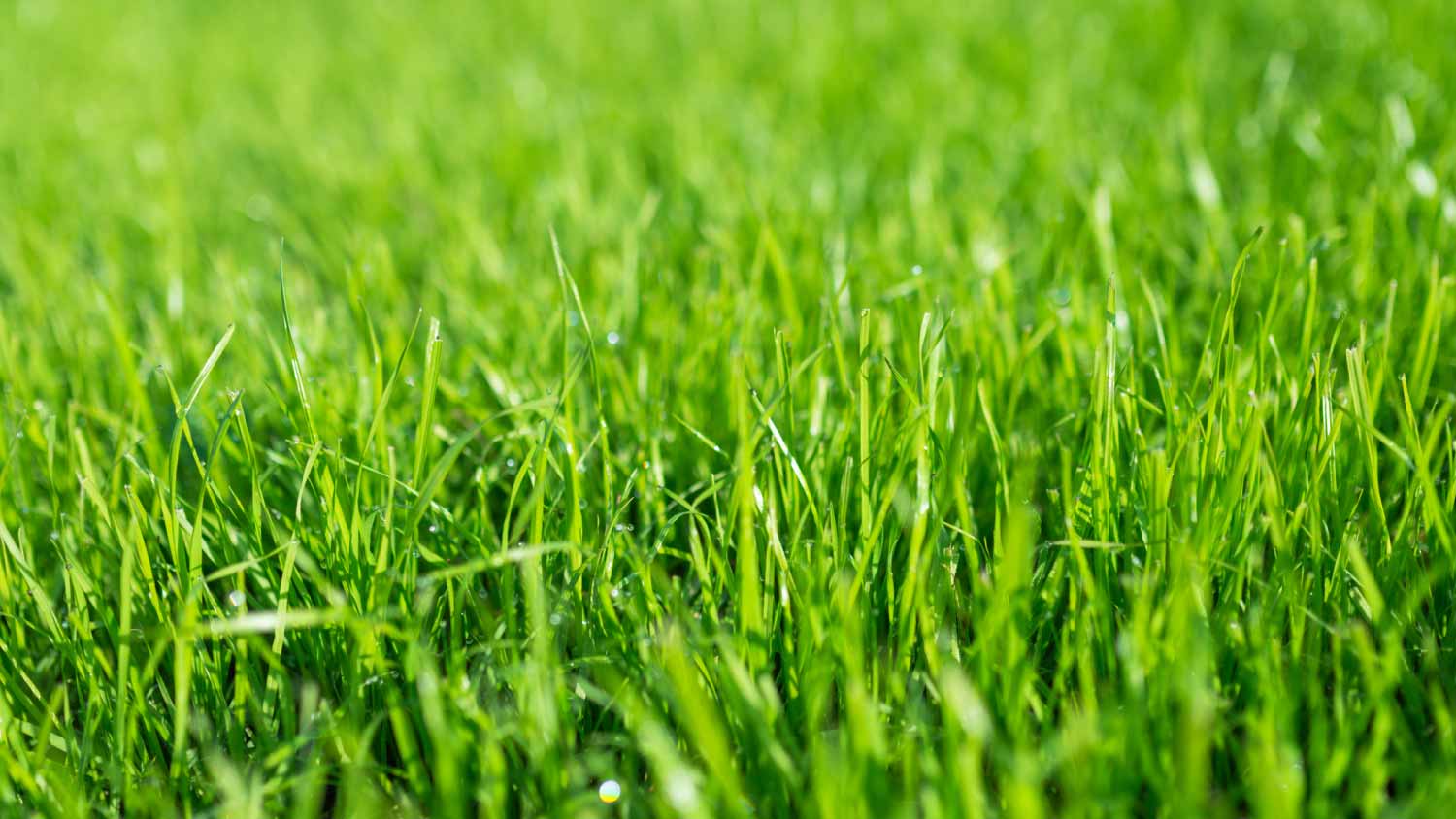
Fescue refers to any grass from the Festuca genus, so you have plenty of options here. All varieties of fescue are hardy and do well with active dogs that love to tumble around the yard with reckless abandon. Fescue is also a great fit for large dogs. Not only is the grass hardy enough to handle weighted paws, but this is an absorbent grass type that handles dog urine easily.
Fescue varieties are also easy to care for and require minimal attention, in addition to easily handling both shade and drought. In other words, this is an easy and durable grass option, though the aesthetics may not be quite as appealing as Kentucky Bluegrass. Fescue thrives in multiple USDA growing zones and requires neutral and well-draining soil.
3. Perennial Ryegrass

Perennial Ryegrass (lolium perenne) is a hardy type of grass and is particularly tolerant of dog urine, making it a fine choice for those with multiple dogs or a single dog with an overactive bladder. The aesthetics here are also on-point, as Perennial Ryegrass retains its beautiful green color even during mild winters. However, it does not do quite as well with extremely cold weather when compared to Kentucky Bluegrass and some other types.
Additionally, this grass type requires more water and fertilizer than many other options on this list, so Perennial Ryegrass is not exactly considered budget-friendly. It requires sun or partial shade to grow and moist, rich, slightly acidic to neutral soil.
4. Zoysia
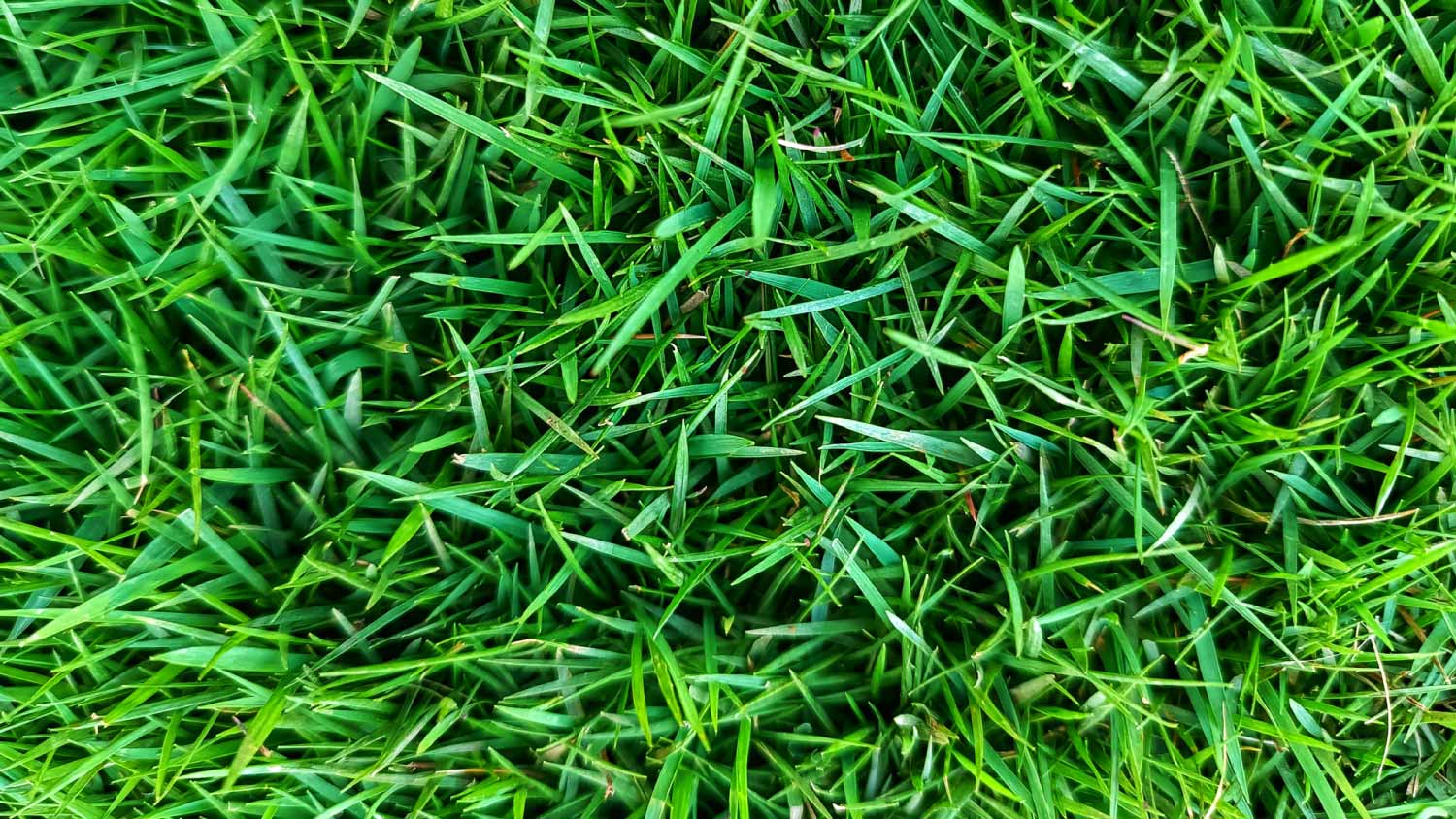
Like fescue, zoysia refers to a genus of grass, though each sub-type here is dense and luxurious, so this grass easily handles both heavy paw and foot traffic. Zoysia is an exceptional choice for warmer climates as it resists drought and does not require frequent watering. Hardy and independent? Sign us up.
In addition to enhanced durability, zoysia grows as a soft and thick lawn that is comfortable to the touch, so take a lay and watch the clouds roll by. What’s the catch? This type of grass takes two to four years to fully grow in and establish itself, and it is not the best choice for colder climates. Zoysia requires slightly acidic to neutral loamy soil.
5. Bermuda Grass
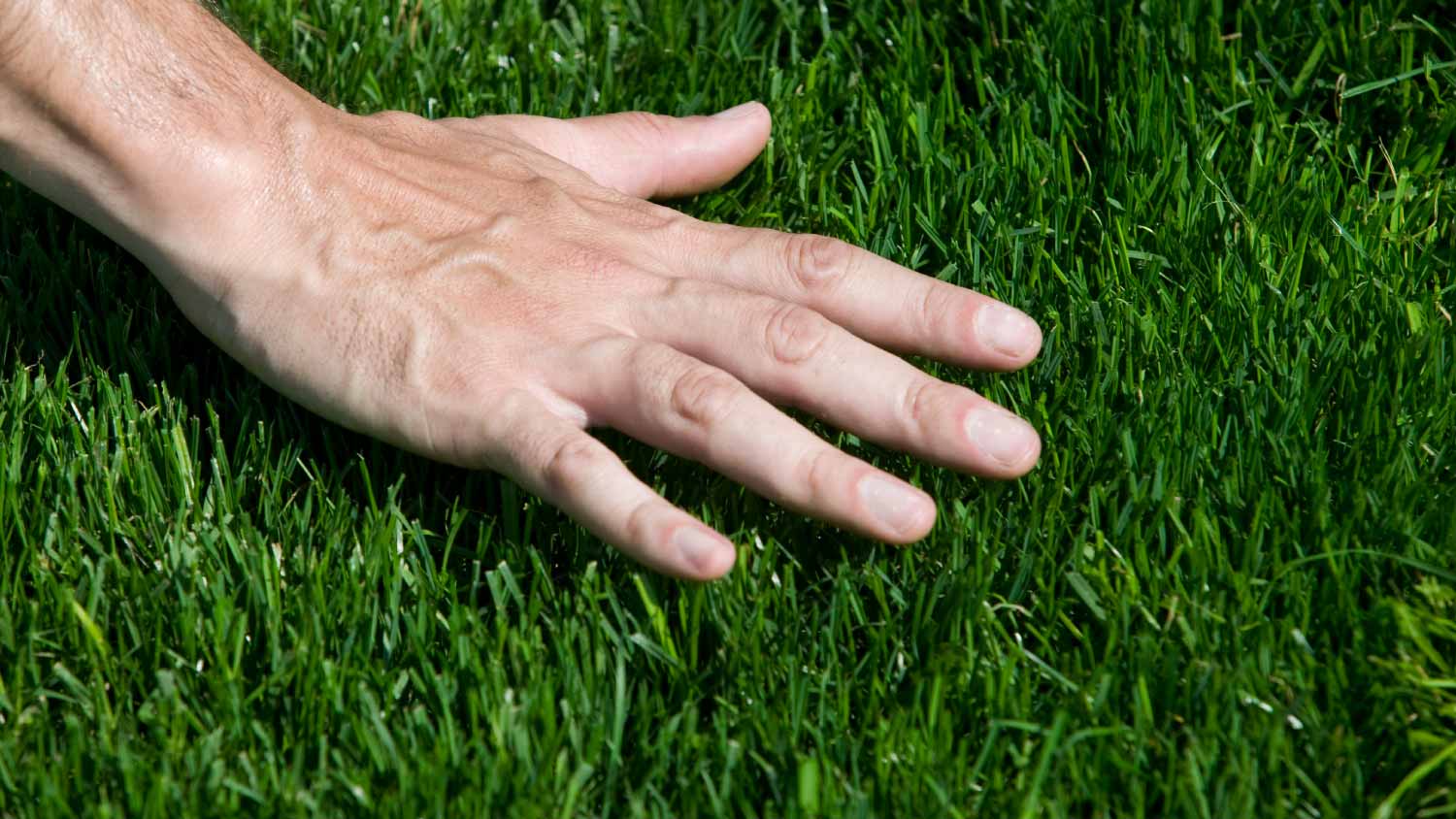
Bermuda grass (cynodon dactylon) is a decent alternative to zoysia grass without all of that waiting. This grass type establishes itself rather quickly and is hardy and fast-healing enough for ample paw traffic. Bermuda boasts an extremely deep root system, further enhancing its sturdiness. There is a reason, after all, why this is such a popular grass choice for golf courses, sports fields, and the like.
Bermuda grass is great for warmer climates, as it does not require frequent watering, but may struggle to grow in cooler climates. Also, it does not thrive in the shade and does best with the full might of the sun shining down on it. As for soil, go for a slightly acidic to neutral rich soil type here.
6. Centipede Grass

Centipede (eremochloa ophiuroides) will stand up to dog urine due to high watering requirements that dilute the waste material at the point of contact. Centipede grass is a standard “green grass” that works great with nearly any yard design. It is also soft, so it won’t poke into paws during rough play sessions. This softness also makes it a good picnic spot, if you are so inclined.
However, this grass requires specific conditions to grow and thrive. It needs acidic soil and absolutely will not tolerate alkaline soil. Additionally, it needs plenty of water to survive and does not do well in cold climates. If you live in the southeast, go for it. If you live anywhere else, test local soil and climate conditions before taking the centipede plunge.
7. Bahia Grass
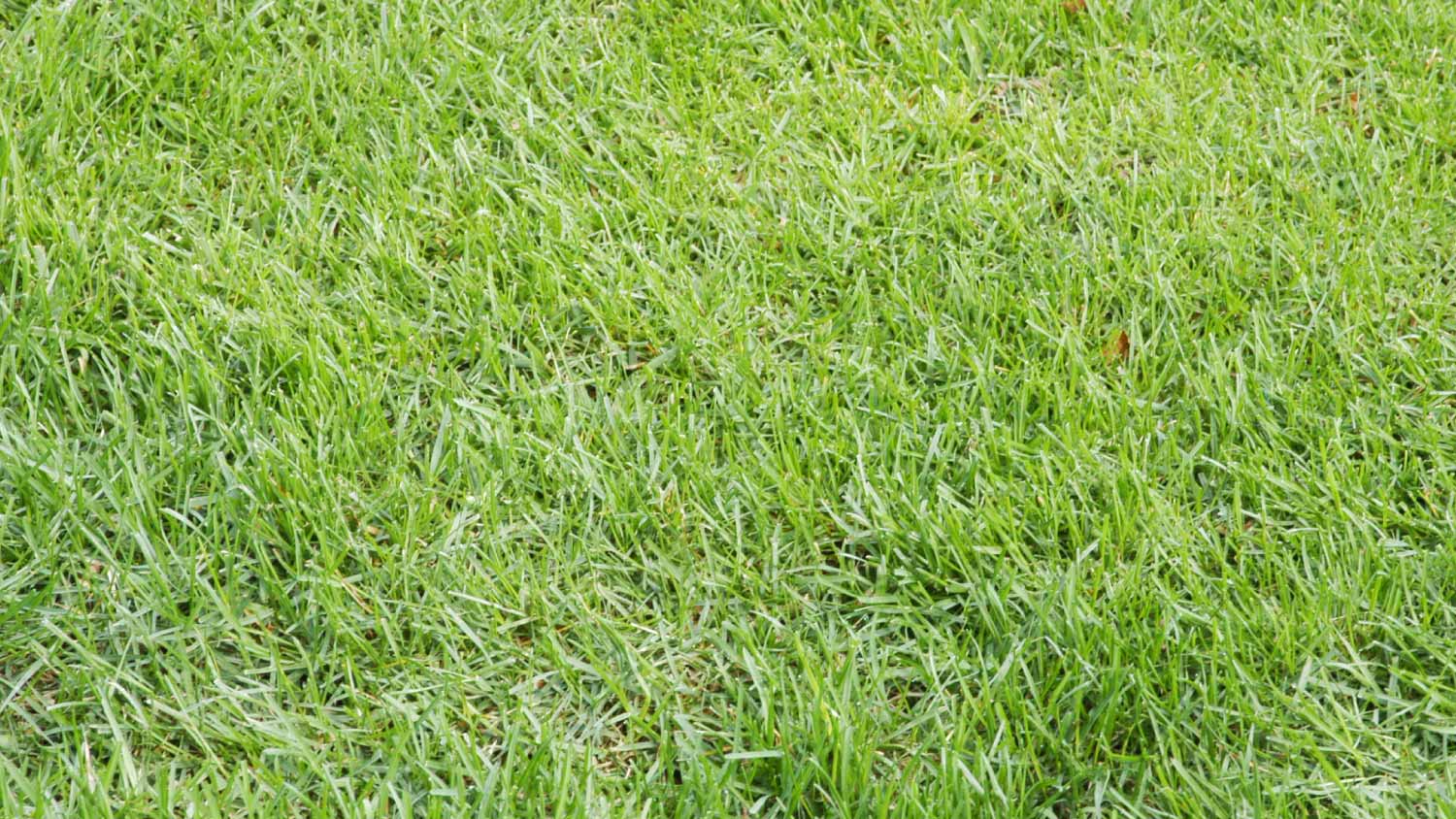
Bahia grass (paspalum notatum) is especially popular in backyards in the southeast, particularly along the gulf coast. This resilient and hardy grass easily withstands foot and paw traffic and is resistant to pests and many diseases. Bahia grass also easily tolerates salty conditions, so dog urine is not a deal breaker here. It grows quickly and forms a dense and comfortable mat for stick-throwing sessions.
While not completely hypoallergenic, bahia grass emits extremely low levels of allergens, which is great for both kids and pets. This grass type does not handle the cold too well, so stick to the warmer and drier parts of the country for the best results.



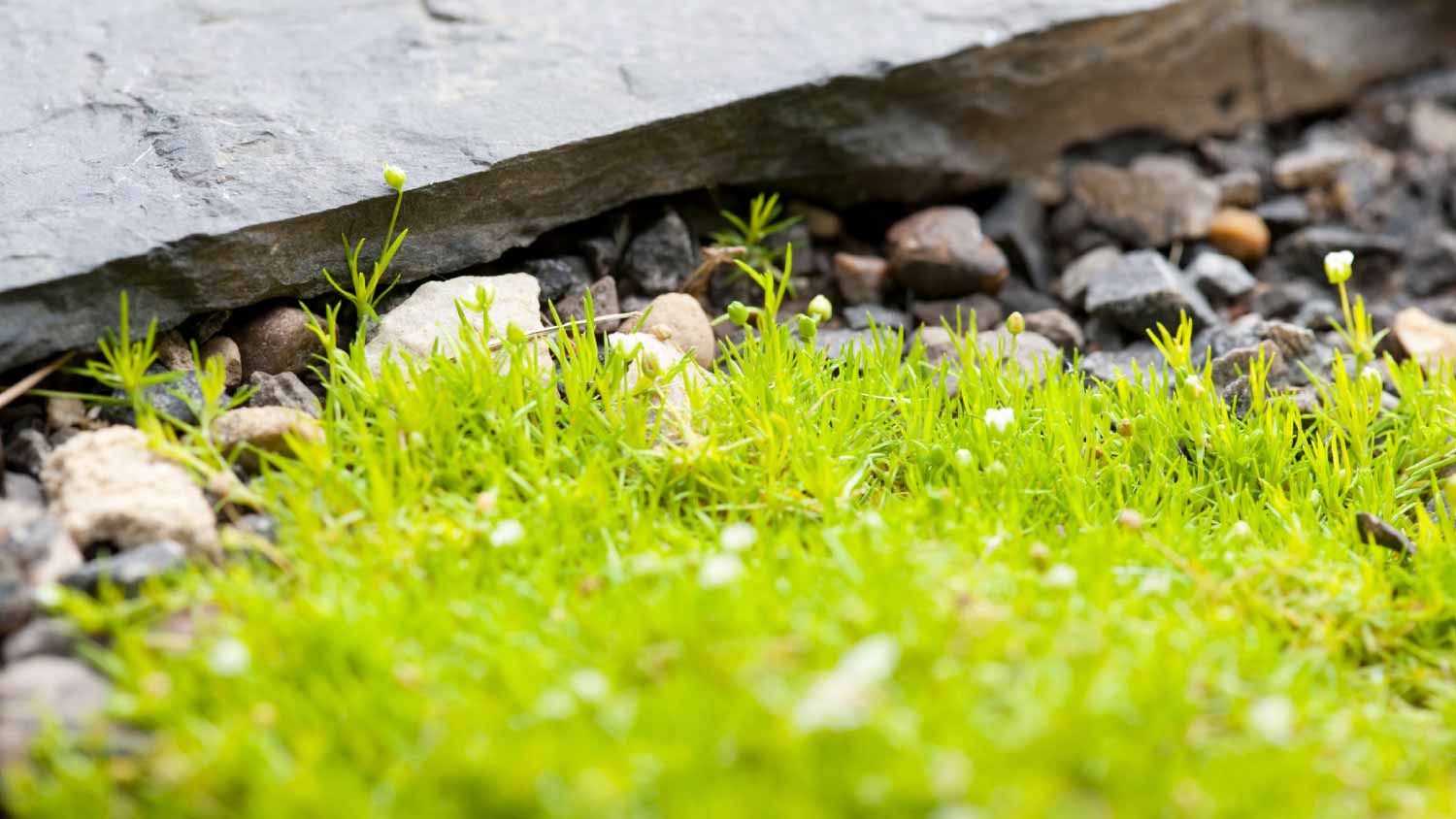
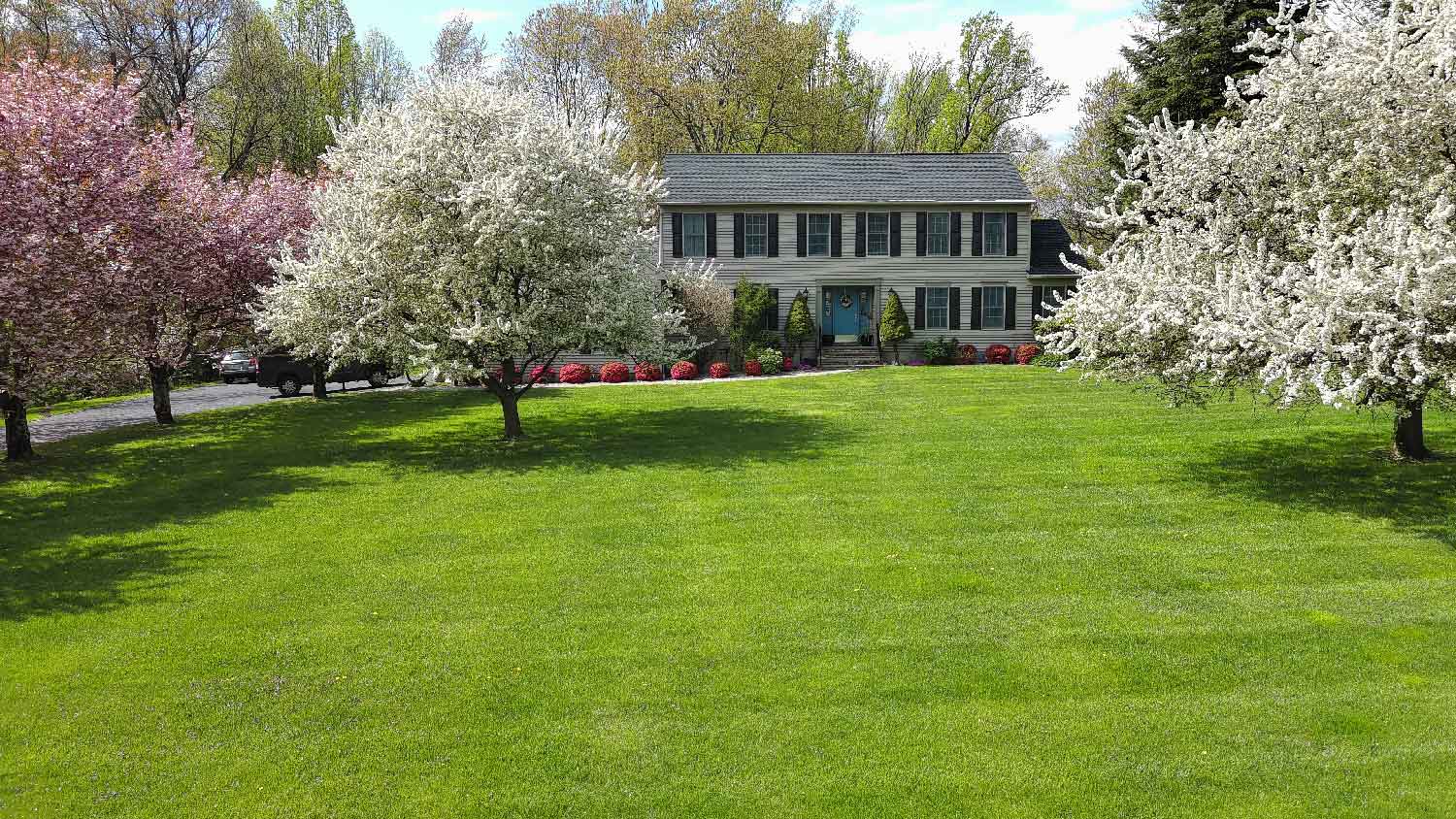
- 8 Types of Grass That Grow Well in the Shade
- Lawn Identification Guide: What Kind of Grass Do I Have?
- Best Grass For High Traffic Lawns: 6 Types to Try
- When the Grass Is Greener: 10 Best Grass Types for Your Lawn
- Quick Curb Appeal: 10 Tips That’ll Turn Your Grass Green Fast
- How To Make Grass Green: Become the Envy of the Neighborhood
- Growing Grass in the Shade: Seed Choice, Prep, and Care
- What Is Bermuda Grass? Everything You Need to Know for a Healthy, Green Lawn
- Bahia vs. Bermuda Grass: What’s the Difference?
- How to Make Bermuda Grass Thicker: 11 Tried-and-True Tips








